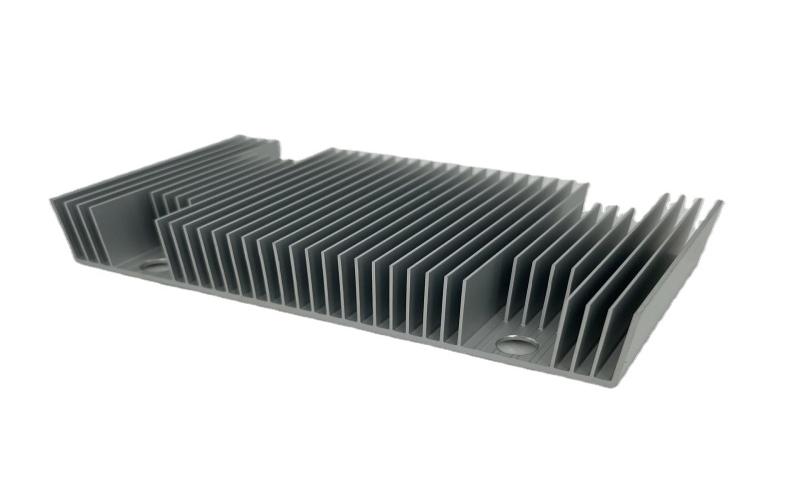Achieving Optimal Cooling: The Advantages of Extrusion Heat Sink
When it comes to managing heat in electronic devices, the importance of efficient cooling cannot be understated. One effective solution that has gained popularity in recent years is the extrusion heat sink. By utilizing the principles of extrusion and heat dissipation, these innovative devices offer several key benefits that can greatly enhance the performance and longevity of electronic components.
1. Enhanced Heat Dissipation
The primary purpose of an extrusion heat sink is to dissipate heat efficiently. These heat sinks are designed with a large surface area that promotes effective heat transfer away from the electronic components. The extrusion process creates intricate fin structures, which significantly increase the heat dissipation capacity. This enhanced cooling capability ensures that electronic devices can operate at optimal temperatures, reducing the risk of performance degradation and premature failure.
2. Cost-Effective Manufacturing
Extrusion heat sinks offer a cost-effective solution for managing heat in electronic devices. The manufacturing process involves extruding aluminum or other suitable materials into the desired shape and size, thereby eliminating the need for complex machining operations. This streamlined production method results in lower costs compared to alternative cooling solutions, making extrusion heat sinks an attractive option for both large-scale production and custom designs.
3. Lightweight and Durable
One significant advantage of extrusion heat sinks is their lightweight nature. Unlike traditional heat sinks that may add excessive weight to electronic devices, extruded heat sinks offer a balance between efficient cooling and minimal weight. The use of aluminum, a lightweight yet durable material, ensures that the heat sinks are resistant to corrosion and can withstand harsh environmental conditions. This durability enhances the lifespan of the heat sink and contributes to the overall reliability of the electronic device.
4. Versatile Design Options
Extrusion heat sinks provide designers with a wide range of options to meet specific cooling requirements. The extrusion process allows for the creation of intricate fin structures, varying fin densities, and different overall shapes and sizes. This versatility enables engineers to tailor the design of the heat sink to maximize cooling efficiency for specific electronic components and applications. Whether it's a high-power LED, a microprocessor, or a power electronic module, extrusion heat sinks can be customized to deliver optimal performance.
5. Ease of Installation
Installing extrusion heat sinks is a straightforward process that requires minimal effort. The heat sinks are typically designed with pre-drilled holes and mounting features, allowing for easy attachment to electronic devices. This ease of installation not only simplifies the assembly process but also enables efficient heat transfer by ensuring proper contact between the heat sink and the component. Additionally, the lightweight nature of extrusion heat sinks reduces the strain on the device, further simplifying the installation process.
6. Efficient Airflow Management
Extrusion heat sinks are designed to optimize airflow management, further enhancing their cooling capabilities. The fin structures created during the extrusion process act as channels, guiding the airflow across the heat sink surface. This directed airflow increases the heat transfer coefficient, enabling more efficient cooling. By effectively dissipating heat, extrusion heat sinks help maintain the desired temperature range for electronic devices, preventing overheating and potential damage.
7. Noise Reduction
Electronic devices that generate excessive heat often require cooling solutions that involve fans or other mechanical components. These additional components can contribute to increased noise levels, which may be undesirable in certain applications. Extrusion heat sinks offer a passive cooling solution that eliminates the need for noisy fans. By efficiently dissipating heat through natural convection, extrusion heat sinks help maintain a quieter operating environment while ensuring optimal cooling.
8. Energy Efficiency
Excessive heat generation in electronic devices often leads to increased power consumption. By effectively managing heat, extrusion heat sinks contribute to improved energy efficiency. By maintaining lower operating temperatures, these heat sinks help reduce the strain on cooling systems, resulting in lower power consumption. This energy-saving aspect not only benefits the environment but also translates into cost savings for businesses and end-users.
9. Compatibility with Thermal Interface Materials
Extrusion heat sinks offer compatibility with various thermal interface materials (TIMs), such as thermal pads or thermal compounds. These materials help bridge the gap between the electronic component and the heat sink, facilitating efficient heat transfer. The design of extrusion heat sinks allows for easy integration of TIMs, ensuring optimal thermal conductivity and maximizing the cooling efficiency of the system.
10. Wide Range of Applications
Due to their numerous advantages, extrusion heat sinks find applications across diverse industries. From consumer electronics and automotive systems to telecommunications and industrial equipment, extrusion heat sinks are widely used in any system that requires effective heat management. Their versatility, lightweight construction, and cost-effectiveness make them an ideal choice for various electronic devices, ensuring reliable and efficient operation.

